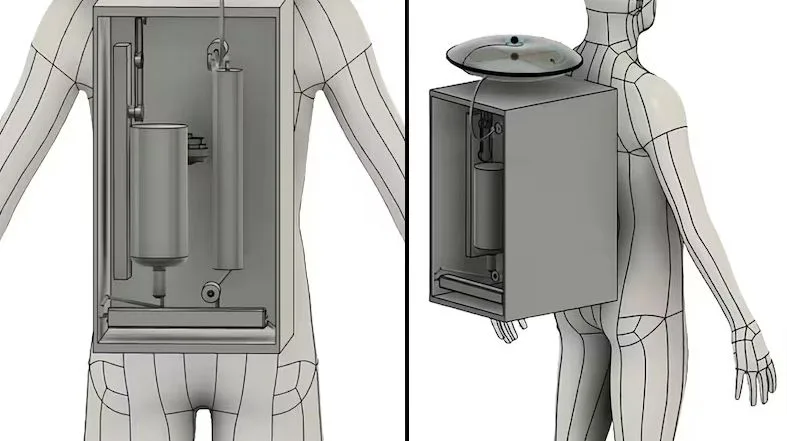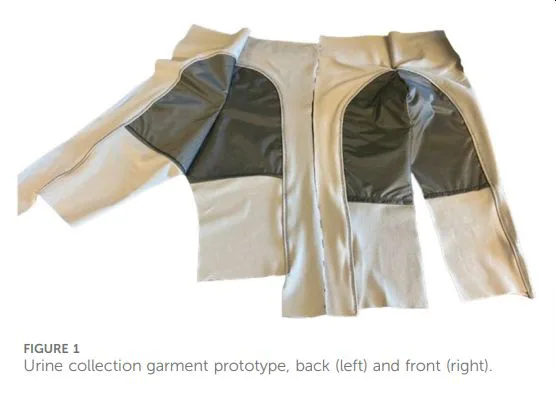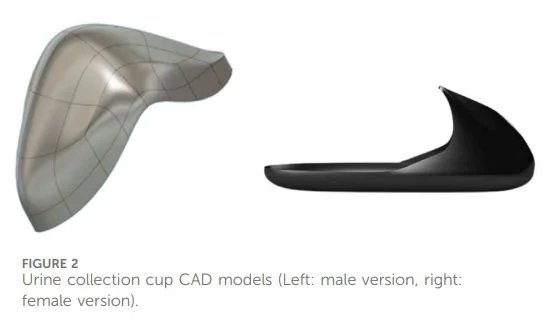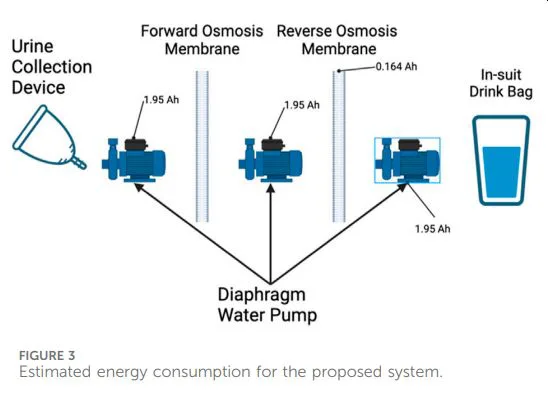
Of all the things in movie, Dune, I particularly got fascinated with the idea how the people used those suits to recycle sweat and urine into drinkable water. It got me thinking: why can’t we make this tech a reality? Well, it turns out researchers at Cornell University are on it! They’ve developed a prototype for a new urine collection and filtration system for spacesuits. Isn’t that awesome?
The design consists of a vacuum-based external catheter, which is connected to a combined forward-reverse osmosis unit. This setup provides a continuous supply of potable water. It also has multiple safety mechanisms to ensure the well-being of astronauts, explained Sofia Etlin, the study’s first author.
Issues with Current Space Suit Design
As per the astronauts, the current Maximum Absorbency Garment (MAG) lacks comfort and sometimes compromises hygiene such as urinary tract infections and gastrointestinal distress. These suits have been in use since the late 1970s and are essentially multi-layered adult diapers made of superabsorbent polymer.
The garment can hold only one liter of water in in-suit drink bags, which is insufficient for longer lunar spacewalks, said Etlin. These spacewalks can sometimes last anywhere from ten to twenty-four hours.
Astronauts have also requested that future spacesuits reduce the time needed to fill and de-gas the in-suit drink bags. Additionally, they have asked for a separate supply of non-caffeinated high-energy drinks to be included.

New Urine Collection Device Design and Features
Keeping these requirements in mind, Etlin and her team developed a urine collection device that includes an undergarment made of multiple layers of flexible fabric. This fabric helps to provide comfort and ensures that the device functions effectively while being worn.
The fabric is also connected to a collection cup:
- Material: The collection cup is made from molded silicone, which is durable and comfortable.
- Design: It comes in different shapes and sizes to fit both women and men, ensuring a proper fit around the genitalia. This customization helps to ensure that the collection process is effective and comfortable for everyone.
Inner Face of Collection Cup:
- Lined with polyester microfiber or a nylon-spandex blend
- Draws urine away from the body and directs it to the cup’s inner surface

Urine Collection Process:
- Urine is sucked into the cup by a vacuum pump
RFID Tag and Hydrogel:
- RFID tag linked to an absorbent hydrogel
- Reacts to moisture by activating the vacuum pump
Over all, the design focuses on comfort and functionality, with the undergarment providing a flexible base and the collection cup designed for a secure fit and efficient urine collection.
Efficient Urine Recycling and Filtration Process
After the urine is collected in the cup, it is redirected to a urine filtration system.
Filtration System: The urine filtration system is designed to recycle the urine with a high efficiency of 87%. This process involves the following two-step filtration process:
- Forward Osmosis: This step removes water from the urine using a concentration gradient. Essentially, water moves from the urine into a solution with a lower concentration, leaving behind impurities.
- Reverse Osmosis: This step further purifies the water by pushing it through a semi-permeable membrane. The membrane allows water to pass through while trapping salts and other contaminants.

The system efficiently recycles urine by first removing water using forward osmosis and then purifying it further with reverse osmosis, using a pump to separate the clean water from the salts and other residues.
The water, after filtration, is enriched with electrolytes. Eventually, the electrolyte-enriched water is pumped into the in-suit drink bag for consumption. It takes not more than five minutes to collect and purify 500ml of urine.
System Features and Testing Phases
The system uses a combination of control pumps, sensors, and an LCD screen to operate and display information. It is powered by a 20.5V battery with a 40 amp-hour capacity, which supports its functioning and ensures that it has sufficient power for its operations.
With the prototype now available, the new design can undergo testing in simulated environments to ensure its functionality and reliability. Once it passes the simulated tests, it will be evaluated during real spacewalks to validate its performance in actual operational conditions.
Takeaway
The new efficient urine collection and recycling system looks promising, especially in terms of comfort and hygiene.
Additionally, success in this prototype’s testing could lead to advancements in future designs of space suits and other space habitation technologies. It may also influence other wearable technologies, impacting fields such as military gear, extreme sports, and healthcare.
Regardless of the specifics, the future of this recycling technology promises to be truly exciting and revolutionary.



